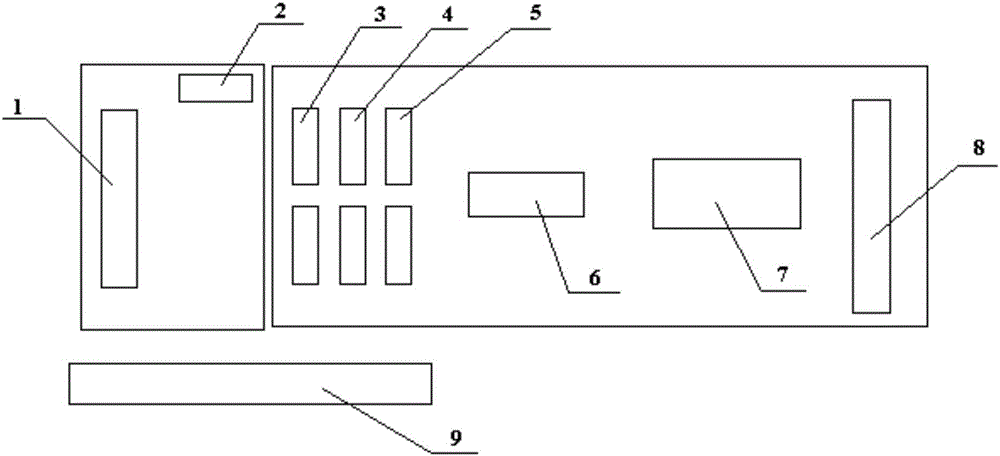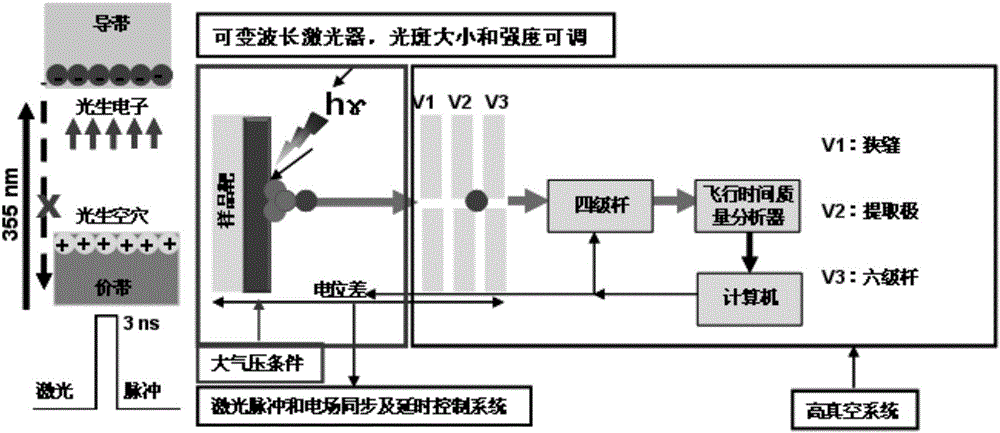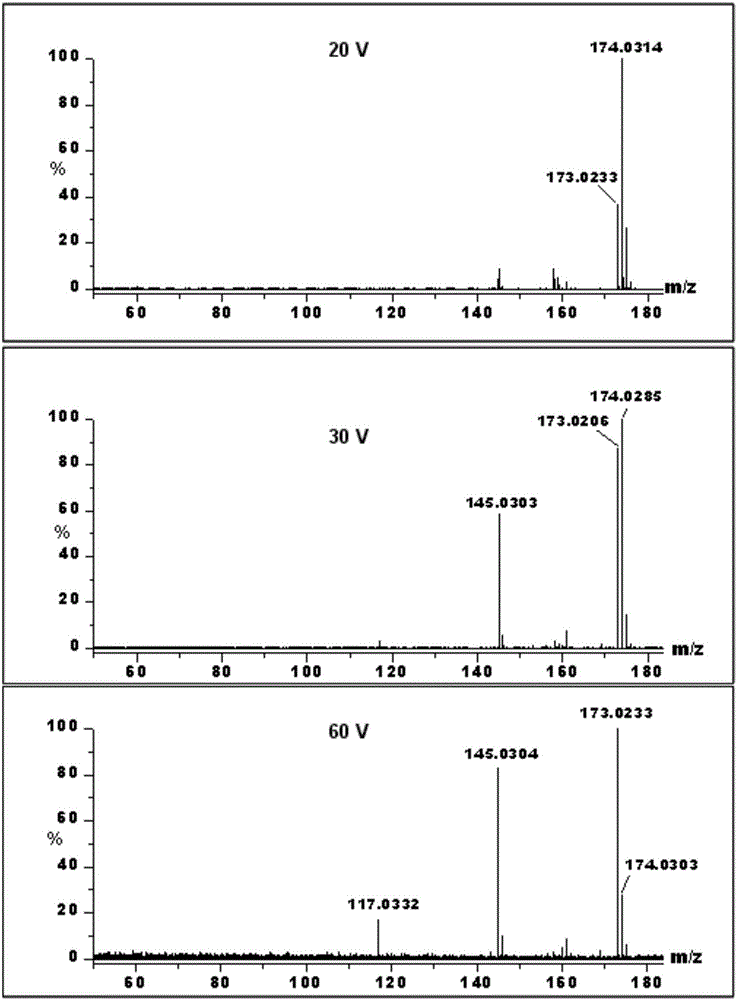Determination method for interfacial photoelectron transfer and material photocatalysis activity, and four-dimensional microscopy imaging analyzer
A technology of photocatalytic activity and microscopic imaging, which is applied in the field of analytical chemistry, can solve the problems that cannot reflect, cannot reflect the change of interfacial photoelectron transfer and photocatalytic activity over time, and cannot identify unknown photocatalytic reaction products or intermediate products. Effects of Improving Detection Capabilities and Overcoming Detection Limitations
- Summary
- Abstract
- Description
- Claims
- Application Information
AI Technical Summary
Problems solved by technology
Method used
Image
Examples
Embodiment 1
[0043] The method for measuring photoelectron transfer and photocatalytic active sites on the surface of titanium dioxide nanoparticles comprises the following steps:
[0044] (1) Preparation of titanium dioxide semiconductor nanomaterial suspension: Weigh 10 mg of nanomaterial and dissolve it in 1 mL of isopropanol, and ultrasonically oscillate for 1 minute to uniformly disperse the nanoparticles;
[0045] (2) Preparation of electron acceptor molecule solution: Weigh 100 mg of 5-hydroxy-1,4-naphthoquinone and dissolve it in 1 mL of acetone to prepare electron acceptor molecule solution;
[0046] (3) Clean the sample target, take 1 microliter of the titanium dioxide semiconductor nanomaterial suspension and drop it on the sample target, and let it dry naturally; get 1 microliter of the electron acceptor molecule solution and drop it on the surface of the titanium dioxide semiconductor nanomaterial, and let it dry naturally;
[0047] (4) Put the sample target into the four-dime...
Embodiment 2
[0053] In this embodiment, the four-dimensional microscopic imaging analyzer is also switched to the positive ion detection mode, and the photoelectron transfer and photocatalytic active sites on the surface of titanium dioxide nanoparticles are measured. The specific method is the same as that of Example 1, except that: In the detection mode, the voltage difference between the sample target and the slit is designed to be 50V, and the obtained positive ion spectrum is as follows Figure 5 as shown, Figure 5 This shows that the electron acceptor molecule has undergone electron detachment.
Embodiment 3
[0055] In this example, the photoelectron transfer and photocatalytic active sites on the crystal face and side surface exposed by titanium dioxide are measured. The specific measurement method is the same as that in Example 1, the difference is that the preparation of the sample target: use 5-hydroxyl-1, 4-naphthoquinone solution soaked to cover the exposed crystal face and side of titanium dioxide, and fixed the exposed crystal face and side of titanium dioxide adsorbed with 5-hydroxy-1,4-naphthoquinone on the conductive metal aluminum strip Or copper strip; the voltage difference between the sample target and the slit is designed to be 20V. detected as Figure 6 shown, from Figure 6 It can be seen that the microscopic imaging signal of the exposed crystal plane of titanium dioxide is very low, indicating that the photocatalytic activity is poor, while its side (non- crystal plane) shows a very strong microscopic imaging, indicating that it has a higher photocatalytic ...
PUM
| Property | Measurement | Unit |
|---|---|---|
| concentration | aaaaa | aaaaa |
Abstract
Description
Claims
Application Information
 Login to View More
Login to View More - Generate Ideas
- Intellectual Property
- Life Sciences
- Materials
- Tech Scout
- Unparalleled Data Quality
- Higher Quality Content
- 60% Fewer Hallucinations
Browse by: Latest US Patents, China's latest patents, Technical Efficacy Thesaurus, Application Domain, Technology Topic, Popular Technical Reports.
© 2025 PatSnap. All rights reserved.Legal|Privacy policy|Modern Slavery Act Transparency Statement|Sitemap|About US| Contact US: help@patsnap.com



